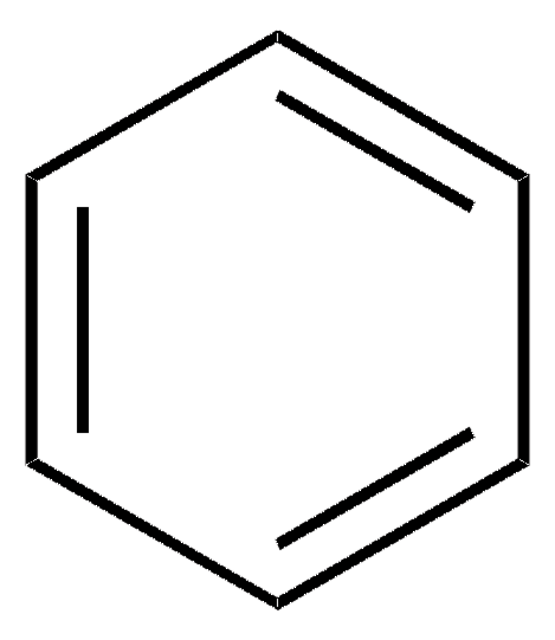89680
Tolueno
analytical standard
About This Item
Productos recomendados
grado
analytical standard
Nivel de calidad
densidad de vapor
3.2 (vs air)
presión de vapor
22 mmHg ( 20 °C)
26 mmHg ( 25 °C)
Análisis
≥99.9% (GC)
temp. de autoignición
997 °F
caducidad
limited shelf life, expiry date on the label
lim. expl.
7 %
técnicas
HPLC: suitable
gas chromatography (GC): suitable
índice de refracción
n/D 1.496 (lit.)
bp
110-111 °C (lit.)
mp
-93 °C (lit.)
densidad
0.865 g/mL at 25 °C (lit.)
aplicaciones
environmental
formato
neat
cadena SMILES
Cc1ccccc1
InChI
1S/C7H8/c1-7-5-3-2-4-6-7/h2-6H,1H3
Clave InChI
YXFVVABEGXRONW-UHFFFAOYSA-N
¿Está buscando productos similares? Visita Guía de comparación de productos
Descripción general
Aplicación
Productos recomendados
Palabra de señalización
Danger
Frases de peligro
Consejos de prudencia
Clasificaciones de peligro
Aquatic Chronic 3 - Asp. Tox. 1 - Flam. Liq. 2 - Repr. 2 - Skin Irrit. 2 - STOT RE 2 Inhalation - STOT SE 3
Órganos de actuación
Central nervous system
Código de clase de almacenamiento
3 - Flammable liquids
Clase de riesgo para el agua (WGK)
WGK 3
Punto de inflamabilidad (°F)
39.9 °F - closed cup
Punto de inflamabilidad (°C)
4.4 °C - closed cup
Equipo de protección personal
Eyeshields, Faceshields, Gloves, type ABEK (EN14387) respirator filter
Elija entre una de las versiones más recientes:
¿Ya tiene este producto?
Encuentre la documentación para los productos que ha comprado recientemente en la Biblioteca de documentos.
Los clientes también vieron
Artículos
The Utility of Headspace Grade Solvents for the Analysis of Organic Volatile Impurities
Protocolos
ASTM D6526: GC Analysis of Impurities in Toluene on SLB®-IL100, 60 m Column
HPLC Analysis of Benzene and Deuterated Benzene on Ascentis® Express C18
GC Analysis of Xylene Isomers on SLB®-IL60
GC Analysis of Class 2 Residual Solvents on OVI-G43
Nuestro equipo de científicos tiene experiencia en todas las áreas de investigación: Ciencias de la vida, Ciencia de los materiales, Síntesis química, Cromatografía, Analítica y muchas otras.
Póngase en contacto con el Servicio técnico















